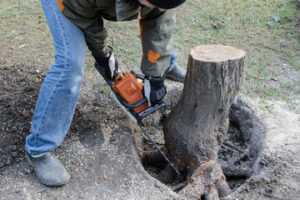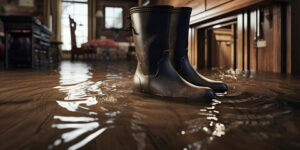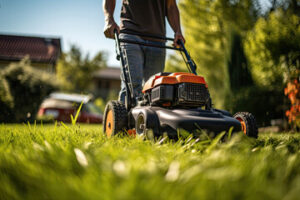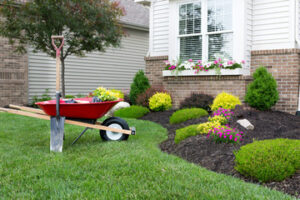Window Replacement Ellicott City, MD is a major home improvement project that affects your comfort, safety, and your wallet. It’s a good idea to work with a professional window installation company for results you can trust.

A company’s prices will vary, but you can save by shopping during the off season. Other factors that impact cost include: the age of your house, permitting requirements, and energy efficiency incentives.
Many homeowners choose to upgrade their windows in order to reduce energy costs. However, according to a recent study by Angi’s, it can take years before you actually recoup your costs in energy savings. This is because the quality of your window, its installation, and the energy efficiency features are all factors that determine whether or not you’ll see any savings.
When selecting new windows, it is important to choose ones with a high R-Value and U-Factor. These ratings measure how well a window resists conductive heat flow. Higher ratings mean greater energy efficiency.
The frame material is also an important factor. For example, a wood frame will be more visually appealing than vinyl, but will require more maintenance. The best frame for your home depends on the climate and your level of maintenance tolerance.
It is also important to make sure your windows are installed correctly. This is because even the best windows can be degraded by improper installation. For instance, if the installer does not use the correct sealant or fasteners, they can compromise your window’s energy efficiency and durability. Additionally, if the window is not secured properly to the frame, it can leak and let cold air in during winter and hot air out during summer.
Another important consideration is the amount of money you are willing to spend on energy-saving features. There are a number of options that can help you save, such as low-e glass and argon gas filling. However, it is important to remember that these upgrades will add to your total cost of the window.
In a time when energy prices are high, it is no surprise that homeowners are interested in ways to reduce their energy consumption and carbon footprint. As a result, green home renovations are increasingly popular, and window replacement is no exception. However, according to a recent study, most homeowners will not recoup the cost of their investment in energy savings from new windows.
Many window companies will advertise that their products are extremely energy efficient. While this is true to a certain extent, it is important to remember that the amount of energy saved depends on how much you are willing to pay for these features and how you install them. For example, if you are replacing an existing window, you can choose between inserts (which fit inside the current frame) or new construction windows. The latter are more efficient because they can be nailed directly to the studs of your wall, creating a tighter seal.
Curb Appeal
When considering window replacement, you have to weigh the cost against the benefit of boosting your home’s curb appeal. While some homeowners are tempted to opt for the lowest price option, choosing the most affordable windows can end up costing you more in the long run. By installing new construction windows that aren’t properly framed, insulated or caulked, you may find yourself dealing with leaks, condensation and mold. In the end, these issues can eat into your home’s value and even cause safety concerns.
The right replacement windows can boost your home’s style and value while minimizing energy costs. For example, a popular choice is Colonial-style windows with slimline sashes, which eliminate the vertical and horizontal grids that divide a full pane of glass into sections. This window type provides ample natural light while still allowing you to enjoy your view. These newer windows are also more energy efficient, resulting in lower utility bills and less waste.
One of the best ways to improve your home’s curb appeal is by adding a welcoming garden to the front yard. Plants, flowers and shrubs are an inexpensive way to add color to your home’s exterior and draw attention to architectural details. For maximum impact, select plants that are complementary to your home’s exterior and fit the climate conditions where you live.
A manicured lawn and well-maintained landscaping can also boost your home’s curb appeal. Mowing, edging and trimming your grass, hedges, trees and flower beds can create a clean and cohesive look. Planting flowers and shrubs in strategic locations can highlight your landscape features and hide unattractive ones. You can also hide equipment, like trash cans and hoses, by using shrubs or flower boxes.
Another way to enhance your home’s curb appeal is with trim and molding. Door casings, crown molding and other trim can add a finished touch to your home’s façade. They can also make your doors and entryway feel more welcoming to potential buyers. You can choose from a variety of styles to suit your home’s architectural design, including classic wood and vinyl trim, or more modern materials, such as composite and PVC resins.
Maintenance
Window maintenance is important to help keep replacement windows looking and functioning their best for years. Regularly cleaning windows is the first step in a maintenance plan, along with periodic lubrication of moving parts. Some homeowners choose to do this themselves, while others prefer to have window professionals handle it. It is important to note that some maintenance may also require repairs, which could include a broken pane of glass or a rotted frame.
Many people choose to repair their existing windows rather than replace them. However, there are a number of scenarios in which repair is not an option, and window replacement is the only choice. These scenarios usually involve extensive damage, which can impact the structural integrity of the home and its energy efficiency.
One common problem with older windows is the inability to raise or lower the upper and lower sashes. This may be due to rotting frames, or it could be as simple as multiple layers of paint bridging the sash and frame together and keeping it from moving freely. Another common issue is a loose drip cap at the top of the window. This is easy to repair with a new, rust-free drip cap that can be purchased at most home centers and nailed in place.
Cracks, chips, and stains on the exterior of the window are unsightly and often indicate water damage. This can lead to rot, mold, and mildew. It can also allow cold air into the home and warm air out, which can increase energy costs. It is important to inspect windows regularly for signs of deterioration and repair any issues immediately.
Some window repair is easy and quick, such as replacing a single broken window pane. This requires removing the old pane, measuring the opening, cutting a piece of new glass to fit, installing it, and sealing it securely. Window repair experts can fix most shattered glass in existing windows without the need to replace the entire window.
Some homeowners choose to repair their existing window casing, which is easily done with a new coat of exterior grade paint. This can spruce up the appearance of your home and improve its curb appeal. Other simple maintenance tasks include scrubbing the sills to remove dirt and debris, painting or staining wood trim, and repairing or replacing damaged screens.
Warranty
Window replacement can be a significant investment for your home. It’s important to find a company with great products and excellent customer service that stands behind their work with a strong warranty. Look for a manufacturer or contractor with a long history in the industry, good reviews and certifications, and a stellar reputation among their clients and customers.
Window manufacturers typically offer a lifetime warranty on their products. However, it’s important to review what is covered by the warranty and its terms and conditions. Some warranties have exclusions that may limit the coverage you get should something go wrong with your windows. In many cases, the manufacturer can void your warranty if you do not report damages within an allotted time frame or fail to follow the terms of the warranty.
Most window warranties cover the actual product only, and exclude installation and labor costs. This is not a bad thing, but it’s important to understand what is and isn’t included in your warranty so you can choose the best plan for your needs.
When researching window companies, it’s also important to look for a company that offers a workmanship warranty to ensure your windows are installed correctly and minimize future issues. Most quality contractors offer a workmanship warranty that covers damage caused by the contractor during installation. Some of these warranties last one year and some may be offered for the entire time you own your home.
Many of the same issues covered by a manufacturer’s window warranty are also covered by the contractor’s workmanship warranty. This type of warranty can include coverage for broken hardware, glass breakage, and any other issues that may occur during the installation process.
A quality contractor will have a team of technicians and builders who are knowledgeable about Milgard products and specifications. This means your windows will be installed to the correct specifications and you’ll have peace of mind knowing that your investment is protected for years to come. In addition, your warranty will be registered online and shared with Milgard-approved contractors to ensure all paperwork is handled quickly and efficiently should any warranty-related work need to be completed.








